The Myth of the One-Size-Fits-All Solution for Top Amazon Sellers

This year, I’ve spoken with over 100 Amazon sellers. A consistent frustration emerged: the sheer volume of “streamlining” solutions promising to revolutionize their businesses. The irony? These tools often fall short, particularly for the most successful sellers. Top Amazon sellers aren’t lacking in ambition or drive. They’re already masters of quality control, branding, and marketing – the very pillars of their success. Their days are filled with strategic decisions, not wrestling with inefficient technology. The constant barrage of software promising a quick fix is, at best, a distraction and, at worst, a significant drain on their resources and time. So what do these high-performing sellers need? They need true tech partners. They need collaborators who understand the unique nuances of their operations and can build custom solutions that address their specific challenges. Imagine a platform seamlessly integrating all the crucial data points, tailored to the exact workflows of a top seller. This isn’t about another generic plugin or a pre-packaged software suite; it’s about a bespoke system designed to alleviate the technological burden, allowing sellers to focus on what they do best: growing their business. The Problem with Generic Solutions The current market is flooded with generic e-commerce tools. While these might offer some level of functionality, they often lack the flexibility and customization required by high-volume sellers. Trying to force a square peg into a round hole leads to inefficiency, wasted time, and ultimately, frustration. Top sellers need solutions that: Integrate seamlessly with existing systems: No more data silos or manual data entry. Provide real-time insights: Data-driven decisions are crucial for growth. Offer unparalleled customization: One-size-fits-all solutions simply won’t cut it. Scale with the business: Growth shouldn’t be hampered by technological limitations. Statistics and Data Research shows that businesses that adopt customized technology solutions experience significantly higher success rates compared to those using generic tools. According to a study by the Aberdeen Group, organizations that implement tailored software solutions see a 30% improvement in operational efficiency and a 25% increase in customer satisfaction. Moreover, 70% of companies reported that customized solutions directly contributed to enhanced growth metrics, showcasing the undeniable benefits of investing in bespoke technology. The diagram below shows the top four benefits of custom software solutions for Amazon Sellers: A Case Study in Custom Solutions Take, for example, the Etermart case study by Inter-Soft. This rapidly growing online retailer faced significant challenges in managing high transaction volumes and integrating multiple sales platforms. Their solution involved a comprehensive system that automated manual tasks, integrated sales channels, and streamlined order processing. By implementing real-time inventory synchronization and dynamic pricing strategies, they not only improved efficiency but also enhanced customer satisfaction. This case underscores the importance of tailored solutions that address specific operational pain points, proving that successful sellers thrive when partnered with technology providers who understand their unique needs. Specific Examples of Tools While the need for bespoke systems is clear, there are several tools and platforms that offer customization options to meet specific business requirements. For instance: Shopify Plus: Provides advanced features and customizable templates for high-volume merchants, enabling tailored user experiences. Prestashop: Offers an open-source platform that allows extensive customization to suit the unique needs of online retailers. Amazon SP-API: Facilitates integration with Amazon’s marketplace, allowing for customized data management and order processing. Inter-Soft’s expert team of software developers specializes in creating custom solutions tailored to platforms like Prestashop and Shopify, as well as enhancing functionalities for Amazon sellers. Their focus on bespoke development not only brings clarity to complex operations but also enables businesses to maximize profitability and streamline their processes effectively. The Future of Amazon Tech Partnerships The future of success for Amazon sellers lies in forging strong partnerships with tech companies capable of delivering truly bespoke solutions. It’s about moving beyond the constant search for the “perfect” tool and embracing a collaborative approach where technology empowers, rather than hinders, growth. This isn’t just about efficiency; it’s about freeing up valuable time and resources so sellers can focus on what truly matters: building their brands, delighting their customers, and achieving their business goals. The era of generic solutions is fading; the age of strategic tech partnerships is dawning.
How Amazon Automation Software Enhances e-Business for Sellers
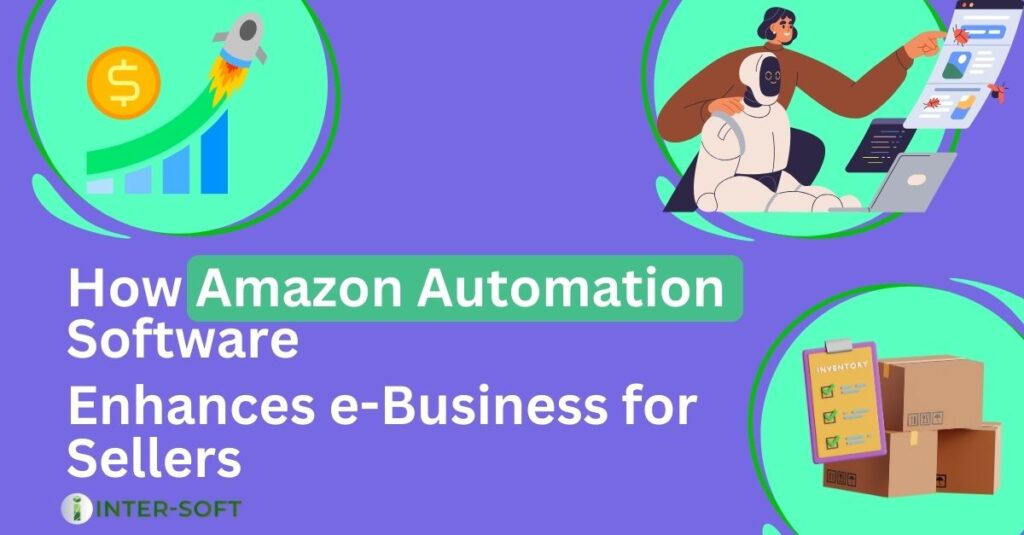
How many time-consuming, repetitive tasks do you handle regularly to keep your business running? E-commerce automation is transforming the way businesses operate by replacing manual processes with efficient tools. If you’re looking to streamline tasks like order processing and payment management, an online solution can be a game changer. In this article, we’ll explore Amazon Automation Software, its benefits, available tools, integration options such as Amazon Easy Tool, and how these solutions can enhance your e-commerce operations. What is Amazon Automation Software? Amazon automation software is a sophisticated suite of tools designed to optimize various aspects of running an Amazon business. These applications manage inventory, fulfill orders, assist customers, and run advertising campaigns, allowing sellers to focus on growth and strategy. By automating repetitive tasks, these tools boost efficiency, minimize errors, and ultimately increase sales. From managing product listings to analyzing sales data, Amazon automation software offers numerous features to help sellers thrive in a competitive landscape. There are several categories of automation tools that address different facets of your business: Key Features of Amazon Automation Software Let’s take a closer look at the essential functionalities of Amazon automation software: Inventory Management Eliminate manual inventory tracking! Automation software can: Order Processing Tired of manually handling orders? Automation software can: Pricing Optimization Staying competitive in the fast-paced Amazon marketplace is crucial. Here’s how automation software can help: Customer Service Leverage automation for exceptional customer support: Benefits of Amazon Automation Software for Sellers Automating your Amazon operations comes with numerous advantages: Introducing Amazon Easy Tool for Automation Enhance your business efficiency by automating the synchronization of orders with Amazon Easy Tool by ToolE. Key benefits of integrating this tool for robust Amazon automation solutions include: Additionally, a new feature now alerts you if any orders are not fulfilled on time, allowing you to take action before your seller metrics are impacted. Choosing the Right Amazon Automation Software Different automation solutions offer varying features. Here are some tips for selecting the best software for your needs: Tips for Implementation Transitioning to automated productivity can be straightforward. Here are some tips for a smooth implementation: Conclusion Amazon automation tools can significantly boost productivity and growth for your Amazon business. Automating order fulfillment, inventory management, and pricing processes frees up time and resources for strategic objectives. Ready to explore the benefits of Amazon automation? Consider integrating ToolE’s Amazon Easy Tool to enhance your sales processes and unlock new growth opportunities. For more information and to arrange a free trial, click here.
How SP-API Expertise Helped Us Create a Top-Rated Amazon App on Shopify
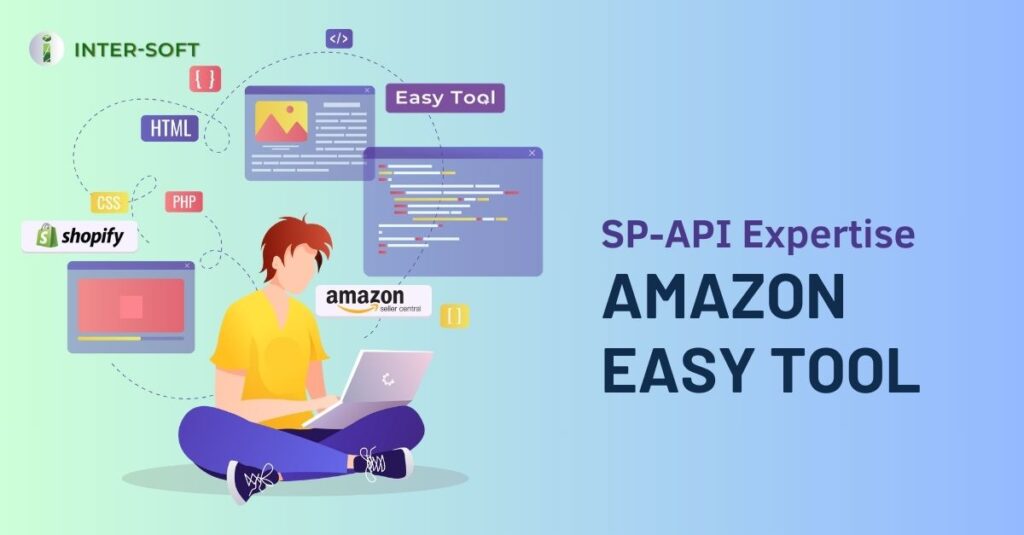
In the dynamic world of e-commerce, integrating different sales channels is critical for business growth. For Shopify merchants looking to tap into Amazon’s vast marketplace, a smooth and efficient integration is essential. This is where Amazon Easy Tool comes in—a top-rated Shopify app trusted by over 2,000 sellers in just six months. But the app’s success didn’t happen overnight; it was built on years of mastering Amazon’s Selling Partner API (SP-API). This blog dives into how our extensive SP-API expertise was instrumental in creating Amazon Easy Tool, one of the leading Amazon integration solutions available today, and what this means for merchants looking to streamline their operations. What Is SP-API? Before exploring our SP-API expertise, let’s first explain what the SP-API is. Amazon’s Selling Partner API (SP-API) is a set of REST-based APIs that allow sellers to access their Amazon account data and automate various processes, from listing products to managing orders. The SP-API is crucial for any tool or application looking to integrate with Amazon because it provides direct access to core Amazon functions like inventory management, order fulfillment, and product listings. However, despite its powerful capabilities, the SP-API is complex. Mastering it requires deep technical knowledge of API architecture, data flows, and Amazon’s rules and policies. This is where our team’s experience comes into play. Years of Expertise in SP-API: The Foundation of Amazon Easy Tool At Inter-Soft, our journey with Amazon’s API ecosystem started long before SP-API was introduced. We initially worked with its predecessor, the Marketplace Web Service (MWS) API, and built several e-commerce solutions that helped sellers manage their Amazon stores. Our early exposure to Amazon’s API ecosystem gave us valuable insights into how it works, the challenges merchants face, and how to overcome them. When Amazon launched the SP-API in 2020, we were among the first teams to explore its capabilities in depth. We saw this as an opportunity to enhance our existing tools and develop new solutions that would allow sellers to automate their processes even more efficiently. The result? Amazon Easy Tool, a Shopify app that uses the SP-API to provide seamless Amazon integration for Shopify sellers. The Key Role of SP-API Expertise Here’s how our SP-API expertise translated into key features that make Amazon Easy Tool one of the top-rated apps in the Shopify marketplace: 1. Advanced Product Management Managing products on Amazon can be tricky, especially for merchants who sell through multiple channels like Shopify. By leveraging the SP-API, we ensured that Amazon Easy Tool enables sellers to manage their Amazon listings directly from their Shopify dashboard. With features like bulk listing, sellers can manage large inventories efficiently. Whether you’re listing 10 products or 10,000, our tool provides automation to reduce manual errors and speed up the listing process. The SP-API allows for real-time data synchronization, so inventory levels and product details are always up to date on both platforms. This advanced level of product management is possible because of the in-depth understanding we’ve gained of SP-API over the years. We know how to leverage Amazon’s APIs to ensure that Shopify merchants have a smooth, error-free experience. 2. Amazon Custom Integration Another unique feature that we incorporated into Amazon Easy Tool is the Amazon Custom integration, which allows merchants to sell customizable products. Normally, handling customized orders on Amazon can be cumbersome since they require additional customer input, such as personalized text or design specifications. However, our extensive knowledge of SP-API enabled us to integrate Amazon Custom into Amazon Easy Tool, making it easy for Shopify sellers to receive, manage, and process customized orders without leaving Shopify’s environment. This integration significantly reduces friction and ensures that customized orders are handled with the same efficiency as standard products. 3. Cross-Border Selling with Amazon Worldwide One of the challenges sellers face when expanding to international markets is the management of listings across different Amazon marketplaces. Each marketplace has its own set of rules, and navigating them can be time-consuming. Thanks to the SP-API, we’ve been able to create a feature within Amazon Easy Tool that simplifies cross-border selling. With just a few clicks, sellers can list their products in multiple Amazon marketplaces, including Europe, North America, and Asia. The SP-API enables real-time synchronization of product listings, so merchants don’t have to worry about manually updating their listings for each market. Our knowledge of how to harness the global endpoints of SP-API has made this a seamless process for our users. 4. Order and Inventory Management in Real Time Managing inventory and orders is one of the biggest pain points for e-commerce merchants. Poor inventory management can lead to stockouts, overselling, and unhappy customers. By using the SP-API, Amazon Easy Tool offers real-time inventory and order management. For Shopify merchants, this means that as soon as an order is placed on Amazon, it is reflected in their Shopify dashboard. Similarly, inventory levels are automatically adjusted on both platforms. This real-time synchronization helps avoid overselling, ensures accurate stock levels, and keeps customers satisfied. Without a deep understanding of the SP-API, building such a reliable inventory management feature wouldn’t have been possible. Our expertise allowed us to create a tool that offers sellers complete peace of mind when managing their Amazon and Shopify sales channels. 5. Compliance with Amazon’s Policies Amazon’s marketplace is highly regulated, with strict policies and guidelines that sellers must follow to avoid account suspensions or other penalties. One of the biggest challenges with building an Amazon app is ensuring compliance with these rules. Our years of working with SP-API and Amazon’s ecosystem have given us the expertise to ensure that Amazon Easy Tool complies with all of Amazon’s policies. We continuously monitor changes in Amazon’s APIs and policies, ensuring that our app stays up to date. This gives sellers the confidence that their accounts are always operating within Amazon’s guidelines. Conclusion: Why SP-API Expertise Matters Building a top-rated Shopify app like Amazon Easy Tool requires more than just technical knowledge—it demands a deep understanding of the API ecosystem you’re working
From Omnichannel to Optichannel: Embracing a Simplified Marketing Strategy for Greater Impact

In the fast-paced world of digital marketing, “omnichannel” has long been the gold standard for creating a cohesive customer experience. This approach aims to integrate every touchpoint, from physical stores to online platforms, to ensure a seamless journey for customers. However, as marketing practices evolve and resources become more constrained, a new approach is emerging that challenges the omnichannel model: optichannel marketing. This article delves into why focusing on fewer, high-impact channels can be more effective and efficient than trying to be everywhere at once. Understanding the Omnichannel Approach Omnichannel marketing is designed to provide a unified and consistent experience across all channels. The premise is simple: regardless of how or where a customer interacts with your brand—be it through a website, mobile app, social media, or in-store—they should receive a seamless and integrated experience. Advantages of Omnichannel: – Consistency: Ensures a unified brand message and customer experience. – Customer Convenience: Allows customers to switch between channels smoothly. – Comprehensive Data Collection: Offers a holistic view of customer interactions. However, the omnichannel approach is not without its challenges. Implementing and maintaining such a strategy involves significant resources, both financial and human. It requires sophisticated technology to integrate channels and constant oversight to ensure consistency. The result can be a complex and costly operation, particularly for smaller businesses. The Emergence of Optichannel Marketing Optichannel marketing represents a shift from the all-encompassing omnichannel approach to a more streamlined, focused strategy. Instead of trying to be present on every possible channel, businesses concentrate on the most effective channels for their specific audience and goals. Key Benefits of Optichannel Marketing: 1. Enhanced Focus: By narrowing your focus to the channels that yield the best results, you can allocate resources more efficiently. This focus allows for deeper, more tailored engagement with your audience. 2. Cost Efficiency: Reducing the number of channels lowers marketing expenses, making it easier to manage budgets and invest in high-impact areas. 3. Improved Personalization: Concentrating on select channels enables more precise and relevant messaging, enhancing the overall customer experience. Implementing an Optichannel Strategy 1. Conduct Comprehensive Customer Analysis: Start by gathering data on your audience’s preferences and behaviors. Utilize analytics tools to understand which channels they frequent and how they interact with them. This analysis will guide your channel selection process and help you prioritize efforts. 2. Prioritize Channels with High Impact: Based on your analysis, identify the channels that provide the highest engagement and conversion rates. For instance, if your target audience responds well to email marketing but less so to social media, allocate more resources to email campaigns and refine your social media strategy. 3. Streamline Messaging: Craft a cohesive message tailored to each chosen channel. While your core brand message should remain consistent, adapt the content to fit the nuances of each platform. For example, use visual content and quick updates for social media, and more detailed information for email newsletters. 4. Leverage Data for Continuous Improvement: Monitor the performance of your selected channels and adjust your strategy based on real-time data. A/B testing and analytics will help you refine your approach, ensuring that you stay responsive to changes in customer behavior and market trends. Case Studies: Success Stories in Optichannel Marketing Several companies have embraced optichannel marketing with impressive results. Here’s a closer look at how some brands have thrived with this approach: – Patagonia: Known for its commitment to environmental sustainability, Patagonia has focused its marketing efforts on channels that resonate with its eco-conscious audience. By prioritizing social media and community-driven campaigns, Patagonia effectively engages its audience while staying true to its brand values. This focused approach has helped build a strong, loyal customer base and reinforced its brand identity. – Lush: The ethical cosmetics brand Lush has successfully implemented an optichannel strategy by concentrating on channels that align with its brand ethos. Lush uses its website, social media, and in-store experiences to connect with customers who value ethical products and transparency. This targeted approach allows Lush to maintain a consistent and engaging brand presence without spreading itself too thin. – Apple: Apple exemplifies an optichannel approach by focusing on its website, flagship stores, and selective social media channels. This strategy allows Apple to deliver a cohesive and premium brand experience, reinforcing its market position as a leader in innovation and design. By concentrating its efforts on high-impact channels, Apple achieves a high level of customer engagement and brand loyalty. Challenges and Considerations While optichannel marketing offers numerous benefits, it’s important to acknowledge potential challenges: – Channel Selection: Choosing the right channels requires a deep understanding of your audience and their preferences. Incorrectly prioritizing channels can lead to missed opportunities or ineffective campaigns. – Consistency: Even though the focus is on fewer channels, maintaining a consistent brand message across these platforms is crucial. Ensure that your messaging aligns with your overall brand strategy and resonates with your target audience. – Adaptability: The digital landscape is dynamic, and customer preferences can shift. Be prepared to adjust your optichannel strategy as needed to stay relevant and responsive. Conclusion As marketing strategies continue to evolve, businesses must adapt to new approaches that align with their goals and resources. Optichannel marketing offers a refreshing alternative to the complexity and cost of omnichannel strategies. By focusing on a select few high-impact channels, companies can streamline their efforts, improve customer experiences, and achieve better results. In essence, embracing the optichannel approach allows businesses to allocate resources more effectively, create more personalized engagements, and ultimately drive greater success. Sometimes, less really is more—especially in the world of marketing.
The Rise of Data-Driven Account-Based Marketing (ABM) in B2B E-commerce
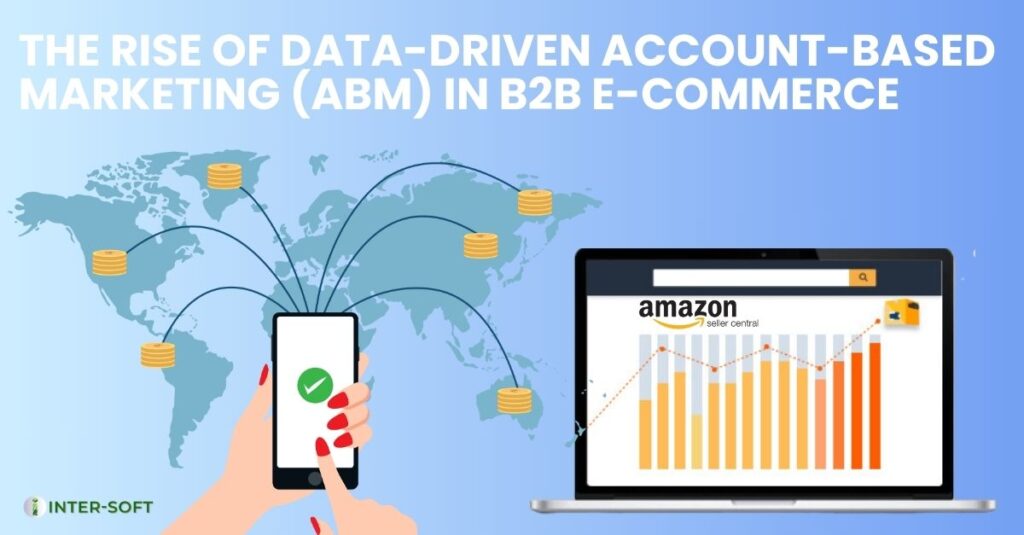
In the dynamic realm of B2B e-commerce, businesses are constantly seeking innovative strategies to maintain a competitive edge. Among these strategies, Data-Driven Account-Based Marketing (ABM) has emerged as a game-changer, transforming how companies approach their marketing efforts. By leveraging data to target, engage, and convert high-value accounts, data-driven ABM is becoming an essential component of modern B2B marketing. In this blog post, we’ll explore how this approach is reshaping the landscape of B2B e-commerce, focusing on targeting high-value accounts, personalizing outreach, and measuring success. The Shift to Targeting High-Value Accounts Historically, B2B marketing strategies often involved broad outreach efforts designed to cast a wide net and capture as many leads as possible. While this approach aimed to generate a large volume of potential prospects, it frequently resulted in low conversion rates and inefficient use of resources. Data-driven ABM, however, takes a more focused approach by zeroing in on a select group of high-value accounts that have the greatest potential to drive significant revenue. The foundation of data-driven ABM is the use of advanced data analytics to identify and prioritize these high-value accounts. By analyzing various data points—such as company size, industry, purchase history, and engagement levels—businesses can create detailed profiles of their ideal target accounts. This data-driven approach allows for a more strategic allocation of marketing resources, ensuring that efforts are concentrated on the accounts most likely to yield the highest return on investment (ROI). For instance, imagine a company specializing in enterprise software solutions. By analyzing data on past purchases and engagement patterns, the company might identify a specific segment of large corporations that frequently invests in similar solutions. This segment becomes a priority for ABM efforts, as these high-value accounts are more likely to result in substantial sales and long-term partnerships. Enhancing Personalization in Outreach Personalization is a critical element of successful B2B marketing, and data-driven ABM takes personalization to a whole new level. Traditional marketing methods often relied on generic messaging that aimed to appeal to a broad audience. In contrast, data-driven ABM allows businesses to craft highly personalized and relevant content tailored to the unique needs and interests of each target account. By leveraging data on account behavior, preferences, and pain points, marketers can create messaging that speaks directly to the specific challenges and goals of each account. This approach not only increases the likelihood of engagement but also fosters stronger relationships with potential clients. For example, suppose a company’s data reveals that a target account has been actively researching solutions related to cybersecurity. The marketing team can use this insight to develop personalized content that addresses the account’s specific concerns about cybersecurity threats and highlights how the company’s solutions can mitigate these risks. Personalized emails, targeted ads, and customized landing pages are just a few ways to leverage data for more effective outreach. Additionally, personalization in data-driven ABM extends beyond content creation to include personalized experiences throughout the customer journey. By analyzing data on how accounts interact with various touchpoints—such as websites, emails, and social media—businesses can optimize their engagement strategies to deliver a seamless and tailored experience. For example, a company might use data to trigger personalized follow-up messages or offers based on an account’s previous interactions with the brand. Measuring and Optimizing Success One of the key advantages of data-driven ABM is the ability to measure and analyze the effectiveness of marketing efforts with greater precision. Unlike traditional marketing strategies that rely on broad metrics like website traffic or click-through rates, data-driven ABM provides more granular insights into account-level performance. By tracking metrics such as account engagement, lead progression, and conversion rates, businesses can gain a deeper understanding of which tactics are driving results and which areas may need improvement. For example, if data shows that a particular piece of content is generating significant engagement from a high-value account, marketers can identify this content as a successful element of their strategy and consider replicating or expanding upon it. Moreover, data-driven ABM allows for continuous optimization of marketing efforts. By regularly analyzing performance data, businesses can make data-informed adjustments to their strategies, ensuring that they remain aligned with their goals and objectives. This iterative approach to optimization helps businesses stay agile and responsive to changes in the market and evolving customer needs. In addition to retrospective analysis, data-driven ABM also offers predictive insights that can inform future marketing strategies. By leveraging historical data and advanced analytics, businesses can anticipate trends and identify potential opportunities for growth. For example, predictive analytics might reveal emerging industries or market segments that are likely to become high-value accounts in the near future, allowing businesses to proactively tailor their marketing efforts to these opportunities. Steps to Building a Data-Driven ABM Strategy To effectively implement a data-driven ABM strategy, businesses can follow these three key steps: 1. Identify and Prioritize Target Accounts The first step is to identify high-value accounts based on data analytics. Use criteria such as revenue potential, industry fit, and historical engagement to create a prioritized list of target accounts. This focused approach ensures that marketing efforts are directed towards the most promising prospects. 2. Develop Personalized Content and Campaigns Once target accounts are identified, create personalized content that speaks directly to their specific needs and challenges. Utilize insights from data to craft tailored messaging, including personalized emails, case studies, and targeted ads that resonate with each account’s unique situation. 3. Measure Performance and Optimize Strategy Regularly track key metrics related to account engagement and conversion rates. Analyze this data to gain insights into which tactics are working and which need adjustment. Use these findings to continuously optimize your ABM strategy, ensuring it remains effective and aligned with your business goals. Embracing Data-Driven ABM for Long-Term Success As B2B e-commerce continues to evolve, embracing data-driven ABM is becoming increasingly essential for businesses looking to stay ahead of the competition. This approach not only enhances the effectiveness of marketing efforts but also positions businesses as forward-thinking leaders in their industry. Data-driven ABM offers a powerful strategy for
The Role of Data Analytics in Driving E-commerce Success
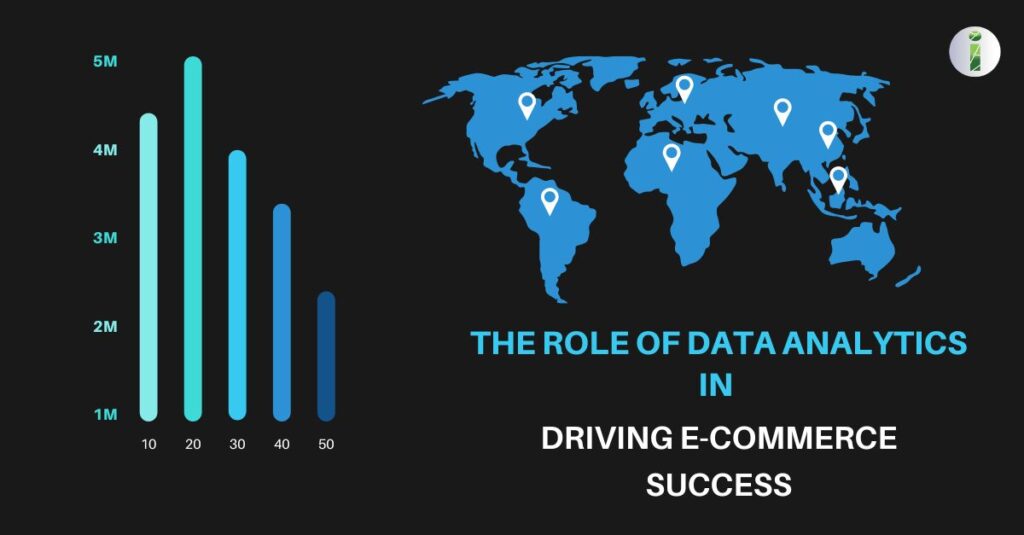
In the fast-paced and ever-evolving world of e-commerce, data has become the lifeblood of strategic business growth. The ability to analyze and leverage data effectively has become indispensable, as it empowers businesses to make informed decisions, optimize operations, and gain deeper insights into customer behavior. Making Informed Decisions: Grounding Strategy in Data Every decision in e-commerce, no matter how small, can have far-reaching consequences. Data analytics provides the insights needed to move beyond intuition and guesswork. By delving into performance metrics, forecasting trends, and uncovering patterns, businesses can make strategic decisions that drive growth. For instance, analyzing sales data across channels can reveal which products are performing well and which marketing tactics are most effective. This knowledge allows companies to optimize marketing spend and tailor their product offerings to meet customer needs. If data shows growing interest in sustainable products, a business can proactively expand its eco-friendly line, positioning itself as a leader in the market. Equally important is the ability to use data to identify new opportunities for expansion. By analyzing market trends, consumer preferences, and competitor activities, businesses can spot emerging niches and capitalize on them before their rivals. This forward-thinking approach helps e-commerce companies stay ahead of the curve and maintain a competitive edge. Optimizing Operations: Enhancing Efficiency Across the Board Operational efficiency is crucial in e-commerce, and data analytics plays a vital role in identifying and addressing inefficiencies. By analyzing data related to inventory, order processing, and shipping, businesses can streamline their supply chain, reduce costs, and improve delivery times. This not only enhances customer satisfaction but also boosts profitability. Data analytics can also optimize website performance, enabling companies to identify and address issues that might be causing friction for users, leading to higher conversion rates and increased sales. Furthermore, analyzing customer service interactions can help businesses implement targeted training programs or introduce new technologies to enhance the overall customer experience. Understanding Customer Behavior: The Key to Personalization and Loyalty In the competitive e-commerce landscape, personalization is key to building lasting relationships and driving sales. Data analytics provides the insights needed to understand who customers are, what they want, and how they interact with the brand. By analyzing purchase history, browsing behavior, and demographic data, businesses can create highly targeted marketing campaigns that resonate with specific customer segments. Personalized recommendations, tailored promotions, and customized email campaigns can all be powered by data analytics, resulting in higher engagement, increased customer loyalty, and higher lifetime value. Additionally, understanding customer behavior can help businesses address pain points in the customer journey, reducing cart abandonment and improving overall satisfaction. The Data Analytics Edge: Leveraging the Right Tools While data analytics is essential for e-commerce success, choosing the right tools is equally important. Businesses need robust analytics platforms that can process large volumes of data, provide real-time insights, and seamlessly integrate with existing systems. When selecting an analytics solution, it’s crucial to choose one that aligns with the unique demands of e-commerce, offering features such as marketplace operations management, detailed reporting, and predictive analytics. By incorporating the right data analytics tools into their strategy, businesses can unlock new opportunities for growth and drive their e-commerce success to new heights. For those who are serious about leveraging data to drive e-commerce success, it’s worth exploring tools that offer these capabilities in a user-friendly and scalable manner. For example, certain solutions on the market, like DataDash, are specifically designed to empower e-commerce businesses by delivering detailed insights into marketplace operations and customer behavior. With such a platform, businesses can streamline their processes, make informed decisions, and ultimately drive growth in a competitive market. Staying Ahead of the Curve: The Importance of Continuous Optimization In the ever-changing world of e-commerce, the need for continuous optimization cannot be overstated. Businesses must constantly adapt and refine their strategies to stay ahead of the competition. Data analytics plays a crucial role in this process, providing the insights needed to identify and address emerging challenges. By regularly monitoring and analyzing data, businesses can make agile adjustments to their product offerings, pricing, marketing campaigns, and customer service approaches. This ability to quickly respond to market shifts and evolving consumer preferences is what separates successful e-commerce companies from their lagging competitors. Conclusion: Embracing Data for Competitive Advantage In the digital age, data analytics is a critical component of e-commerce success. By harnessing the power of data, businesses can make informed decisions, optimize their operations, and gain deeper insights into their customers. As the e-commerce industry continues to evolve, those who effectively leverage data analytics will be the ones who thrive in an increasingly competitive market.
Mobile Mavericks: Riding the Wave of B2B Mobile Commerce Revolution

Once confined to the realm of consumer purchases, the mobile revolution has now permeated the often-conservative realm of business-to-business (B2B) e-commerce, igniting a transformation that promises to redefine how businesses engage with their clientele. Join us as we embark on a journey through the bustling streets of B2B mobile commerce, exploring its rise, its implications, and the strategies for businesses to thrive in this brave new world.
Selecting the Ideal Software Development and Amazon Custom Software Approach for Your E-commerce Business

Navigating the world of e-commerce can be a daunting task, especially when it comes to choosing the right software development approach for your online store. Whether you’re starting a new e-commerce venture or looking to revamp an existing one, making the right choice can make all the difference in the success and growth of your business.
Custom Software: Boosting Enterprise Marketplace Sales for High-Earning Sellers
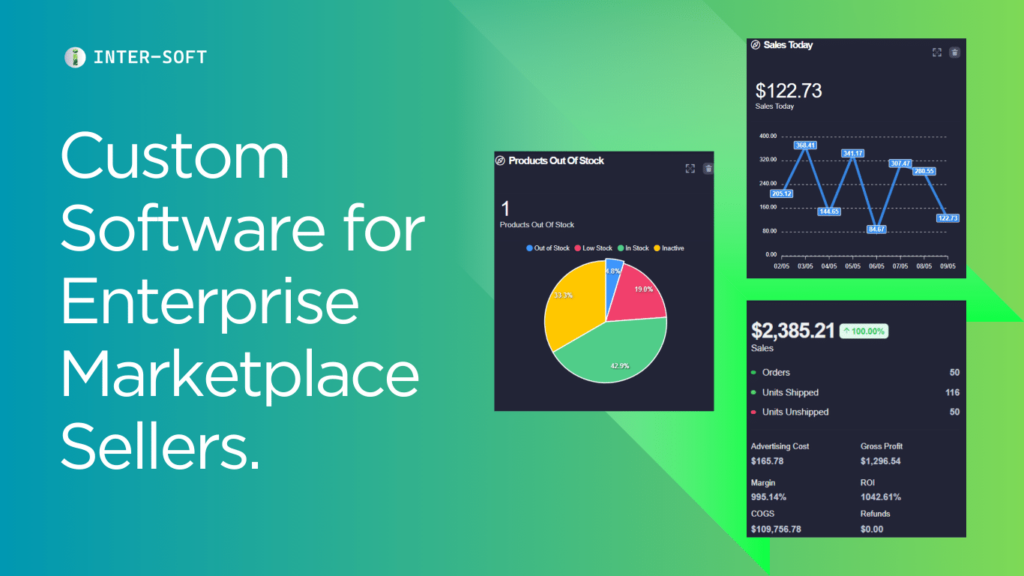
Are you an enterprise-level seller making over $5k/month on marketplaces and Amazon? Discover how custom software can revolutionize your sales strategy and enhance profitability. In this blog post, we will explore the benefits and tips for leveraging custom software to maximize your marketplace success.
Inter-soft and Ampersand: A Strategic Partnership to Elevate E-commerce Tax Compliance

In an era where e-commerce continues to thrive and expand, the complexity of navigating tax compliance becomes an ever-pressing challenge for online business owners. Recognizing this growing need, we at Inter-soft, alongside Ampersand, have forged a strategic partnership designed to provide a seamless, technology-driven solution for e-commerce tax compliance. This collaboration marries our deep technical prowess with Ampersand’s specialized tax expertise, creating an ideal support system for e-commerce businesses in the United States.




